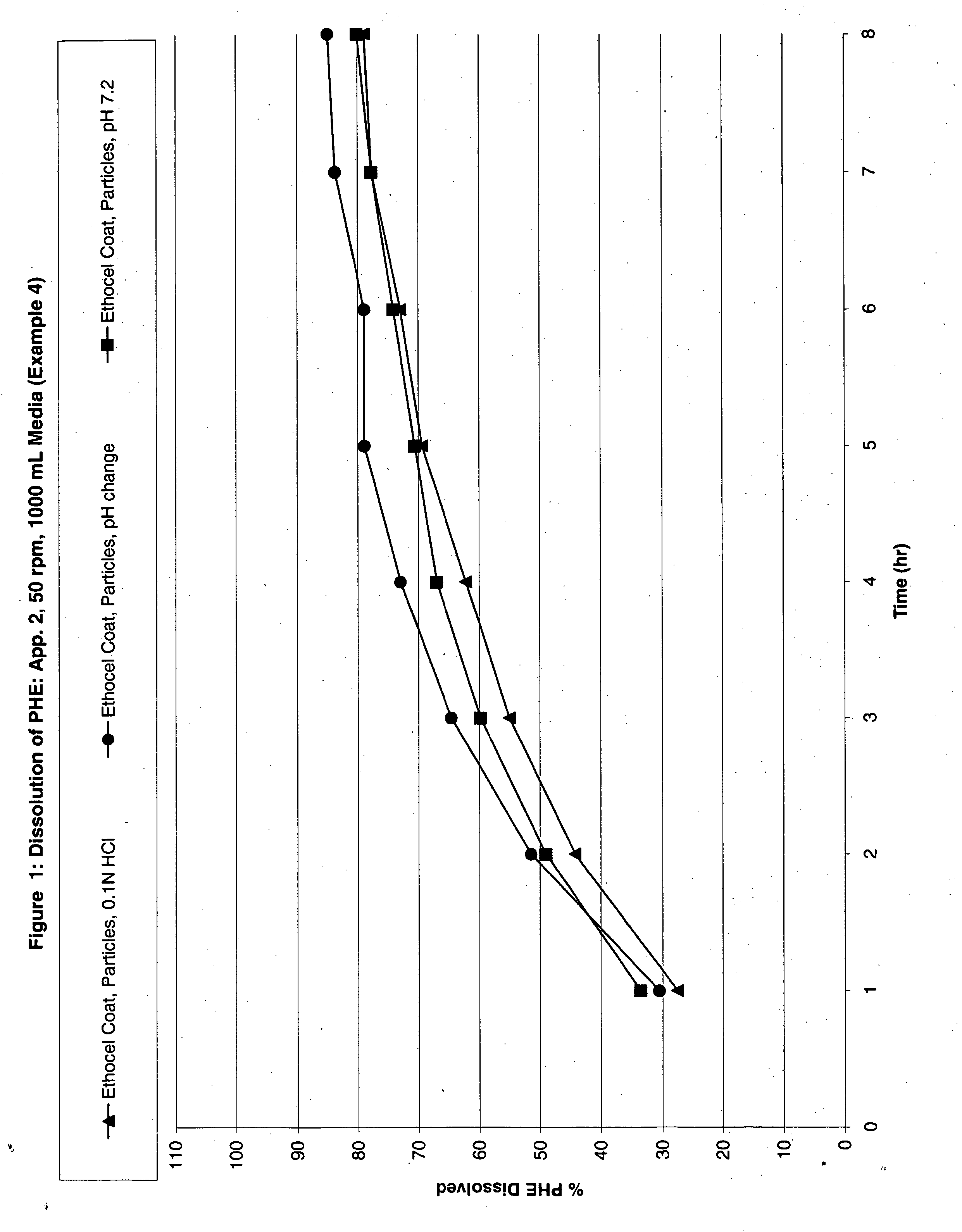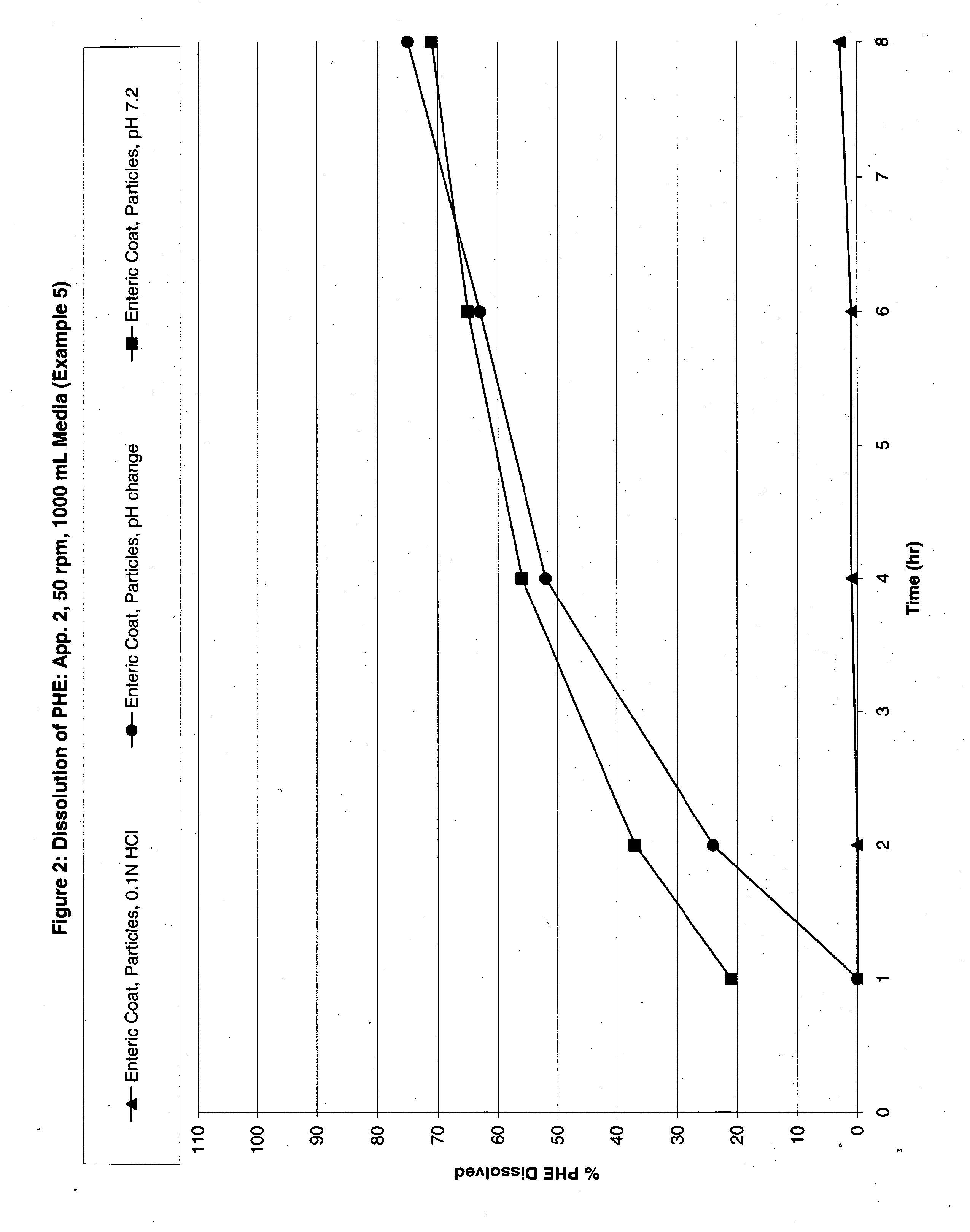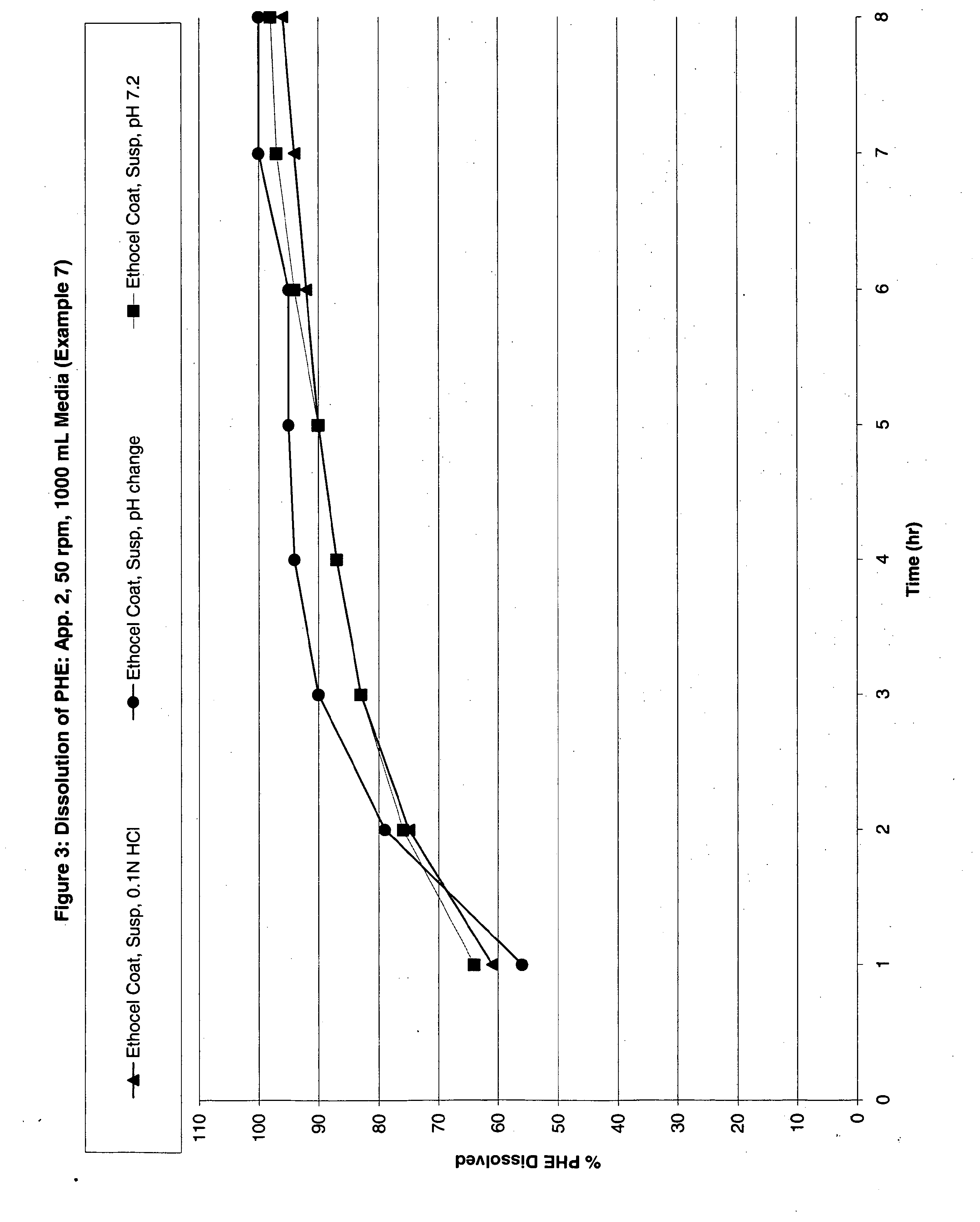Modified Release Analgesic Suspensions
a technology of analgesic suspension and modified release, which is applied in the direction of dispersed delivery, non-active ingredients of oil/fat/waxes, drug compositions, etc., can solve the problems of significant formulation challenges, the dissolution of the drug as the rate limiting step in drug absorption, and the administration of such dosage units
- Summary
- Abstract
- Description
- Claims
- Application Information
AI Technical Summary
Benefits of technology
Problems solved by technology
Method used
Image
Examples
example 1
Preparation of Phenylephrine—Resin Complex Particles
[0124]2125.0 g of phenylephrine hydrochloride was dissolved in 2000.0 g of deionized water in a suitable stainless steel container. 2500.0 g of Amberlite IRP-69 ion exchange resin, commercially available from Rohm & Haas Corporation, was added thereto and stirred using a laboratory mixer at 100 RPM for at least 12 hours. The resulting slurry was filtered through a Wattman #4 filter paper using vacuum filtration. The resulting solid was air dried for 1-2 hours to yield wet resin particles, which were then dried in a Glatt fluid bed GPCG-1 drier for 10 minutes at 50° C. The resulting dry particles contained approximately 32.0% phenylephrine. The remaining, unbound phenylephrine remained in the filtered slurry solution.
example 2
Preparation of Ethylcellulose Semipermeable First Coating Solution
[0125]A coating solution was prepared by dispersing 690 grams of ethylcellulose, which is commercially available from Dow Chemical Corporation under the tradename, “Ethocel 10 CPS,” 150 g of acetyltributyl citrate (ATBC), and 20 mg of magnesium stearate USP in a solvent containing, based upon the total weight of the solvent, 3780 g of acetone and 3780 g of isopropyl alcohol (a 50:50 mixture) under ambient conditions. The solution was mixed using a laboratory mixer at 75 RPM for at least 60 minutes.
[0126]The resulting coating solution contained, based upon the total wet coating solution, 8.19% of ethylcellulose, 1.78% acetyltributyl citrate, 0.24% magnesium stearate, 44.89% acetone, and 44.89% isopropyl alcohol. The solution contained 10% solids. The relative amounts of solids were, based upon the total weight percent of the dried coating solution, 80.23% ethylcellulose, 17.44% ATBC, and 2.33% magnesium stearate.
example 3
Preparation of Protective (Enteric), Second Coating Solution
[0127]A coating solution was prepared by dispersing 4193.1 g of methacrylate copolymer dispersion (30% solids), commercially available under the tradename, “Eudragit L30D-55,” which is commercially available from Rohm Pharma, in 2396.0 g purified water, and mixed at 25 RPM under ambient conditions for 5 minutes. 50.8 g of glycerol monostearate and 126.8 g of triethylcitrate were added thereto with mixing at 50 RPM for at least 30 minutes.
[0128]The resulting coating solution contained, based upon the total wet coating solution, 61.97% of Eudragit L30D-55 (30% of which are as solids), 0.75% glycerol monostearate, 1.87% triethylcitrate and 35.41% purified water.
[0129]The relative amounts of solids were, based upon the total weight percent of the dried coating solution, 87.63% Eudragit L30D-55, 3.53% glycerol monostearate, and 8.83% of triethylcitrate.
PUM
 Login to View More
Login to View More Abstract
Description
Claims
Application Information
 Login to View More
Login to View More - R&D
- Intellectual Property
- Life Sciences
- Materials
- Tech Scout
- Unparalleled Data Quality
- Higher Quality Content
- 60% Fewer Hallucinations
Browse by: Latest US Patents, China's latest patents, Technical Efficacy Thesaurus, Application Domain, Technology Topic, Popular Technical Reports.
© 2025 PatSnap. All rights reserved.Legal|Privacy policy|Modern Slavery Act Transparency Statement|Sitemap|About US| Contact US: help@patsnap.com



